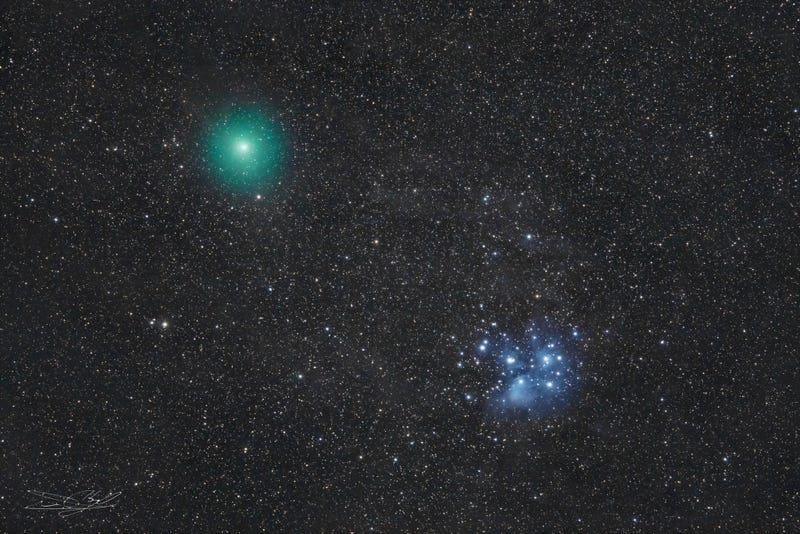 Space
Space
ICYMI: The Best Photos of Last Week’s Green Comet
Photo: Abel de Burgos (Flickr) Ryan F. MandelbaumToday 3:05pmFiled to: astrophotographyFiled to: astrophotography
Ryan F. MandelbaumToday 3:05pmFiled to: astrophotographyFiled to: astrophotography
- space
- 46p/wirtanen
- comet
- science
- astronomy
2Save
- Go to permalink
Those of you with dark enough skies last week might have caught a glimpse of the green comet 46P/Wirtanen. It was bright enough to see with the naked eye, and occurred alongside the Geminid meteor shower.
I couldn’t see the comet from where I was staying (the sky was too bright), and you might have missed it as well. Thankfully, plenty of other astrophotographers did not, and have posted some pretty awesome images.
Comet 46P/Wirtanen came closest to Earth on Dec. 16, when it was around 11.6 million kilometers (7.2 million miles) away, or approximately 30 times the distance from the Earth to the Moon. It has a relatively quick orbit, circling the Sun every 5.5 years, according to a National Radio Astronomy Observatory release. Compare that to comet Hyakutake, which has a 70,000-year orbital period.
46P/Wirtanen’s brightness and proximity allowed astronomers and astrophotographers to observe it in detail, revealing the typical coma of particles and water released when comets move close to the Sun. The green glow comes from the sunlight ionizing cyanogen and diatomic carbon molecules.
The Atacama Large Millimeter/submillimeter Array (ALMA) in Chile took detailed observations of 46P/Wirtanen in the radio frequencies, mainly the innermost piece called the nucleus. The ALMA image on the left is about 1000 times smaller than the optical image on the right in the picture above, and confirmed the presence of carbon-based molecules on the comet.
But the comet wasn’t the only show in town. Last week also brought the Geminid meteor shower, an annual shower that peaks at around 50 meteors per hour in dark enough skies. Several photographers were able to catch the comet and the meteors in a single image:
And check out this one:
I am forever grateful for the astronomers and photographers in areas with dark skies who point their cameras up for folks like me who miss some of space’s magic.
Share This Story